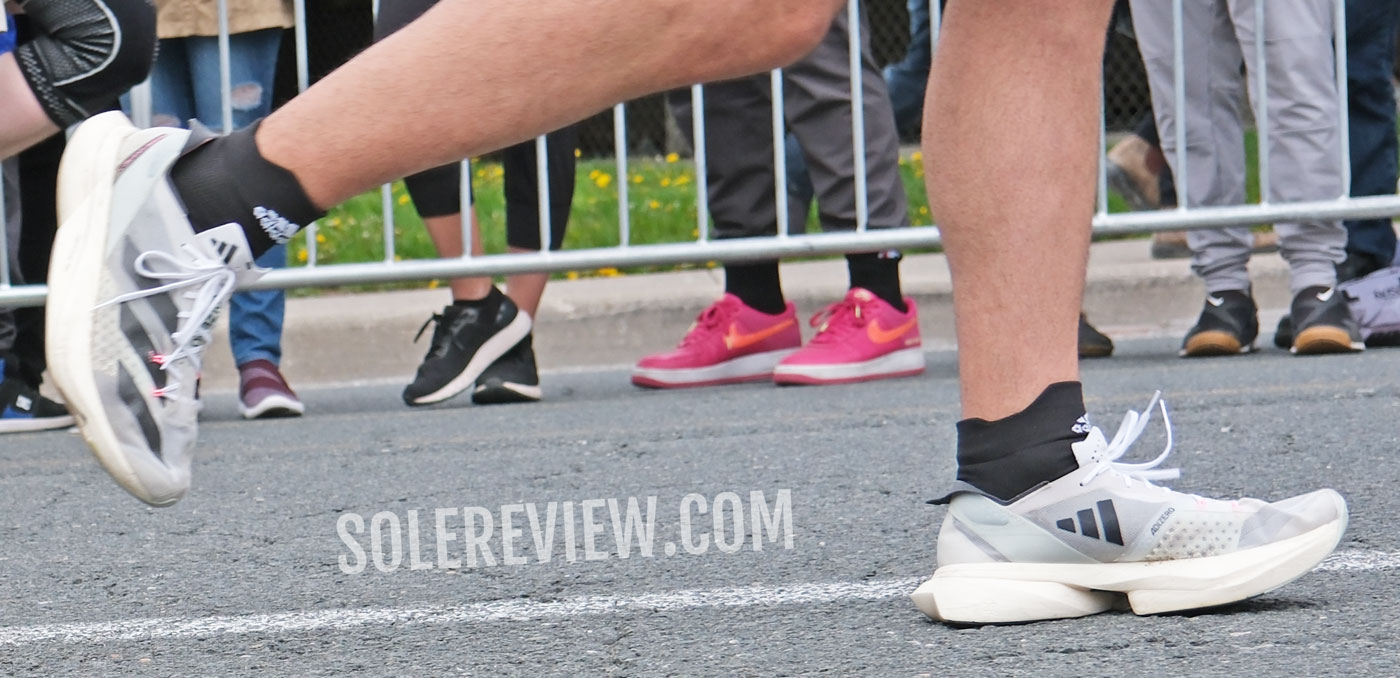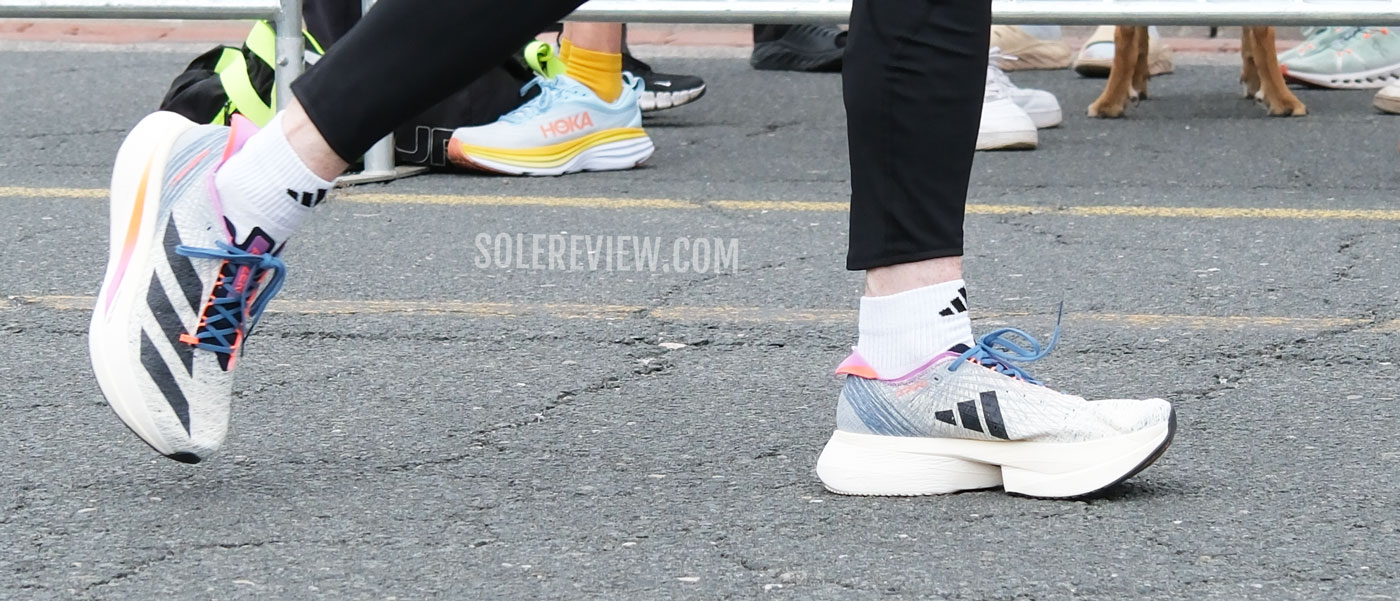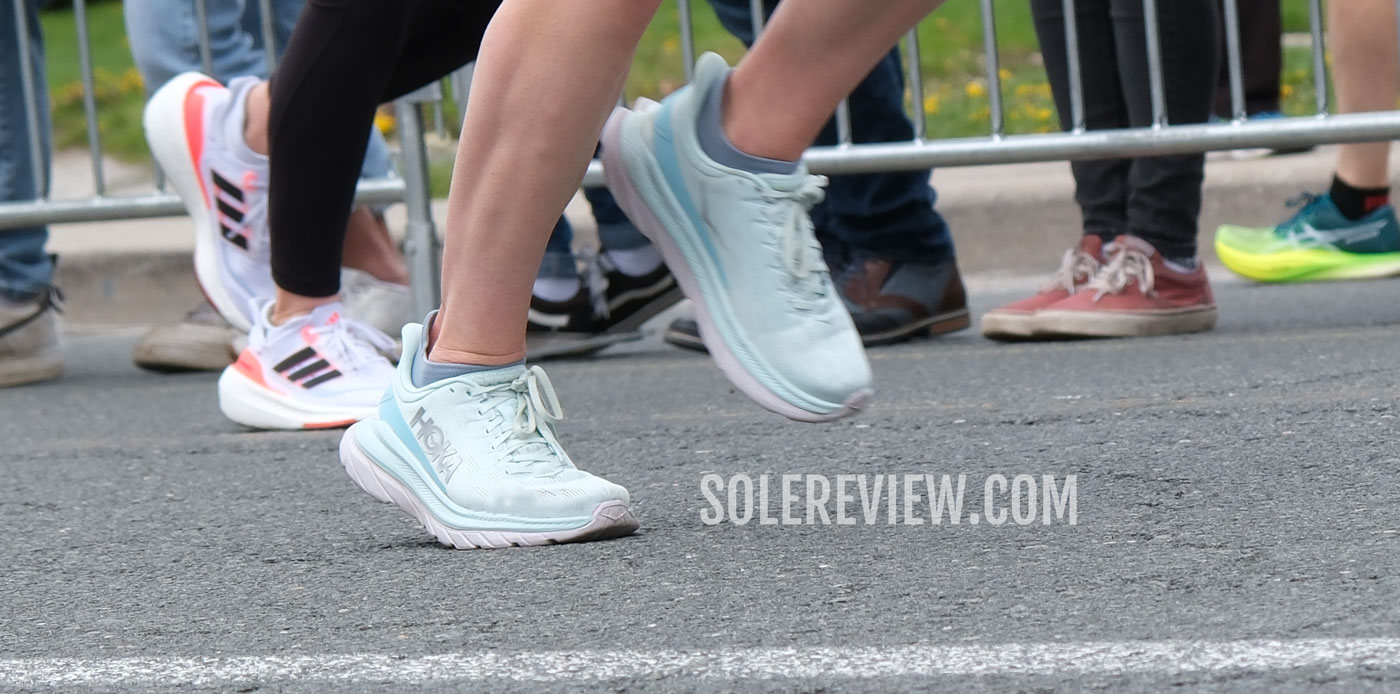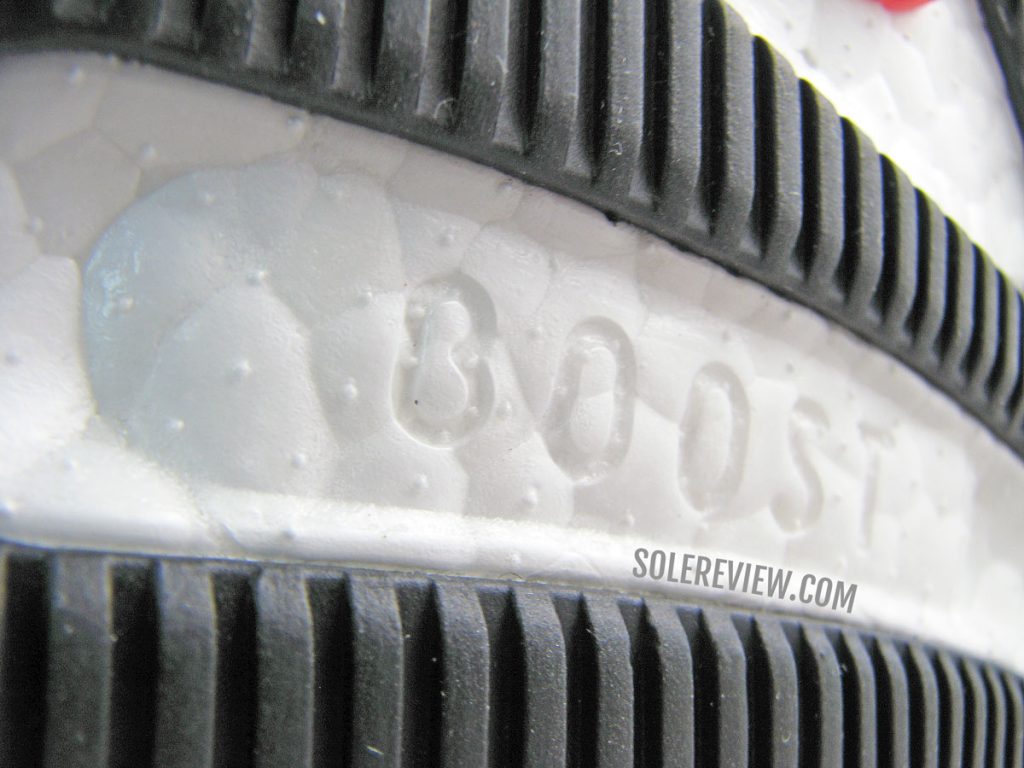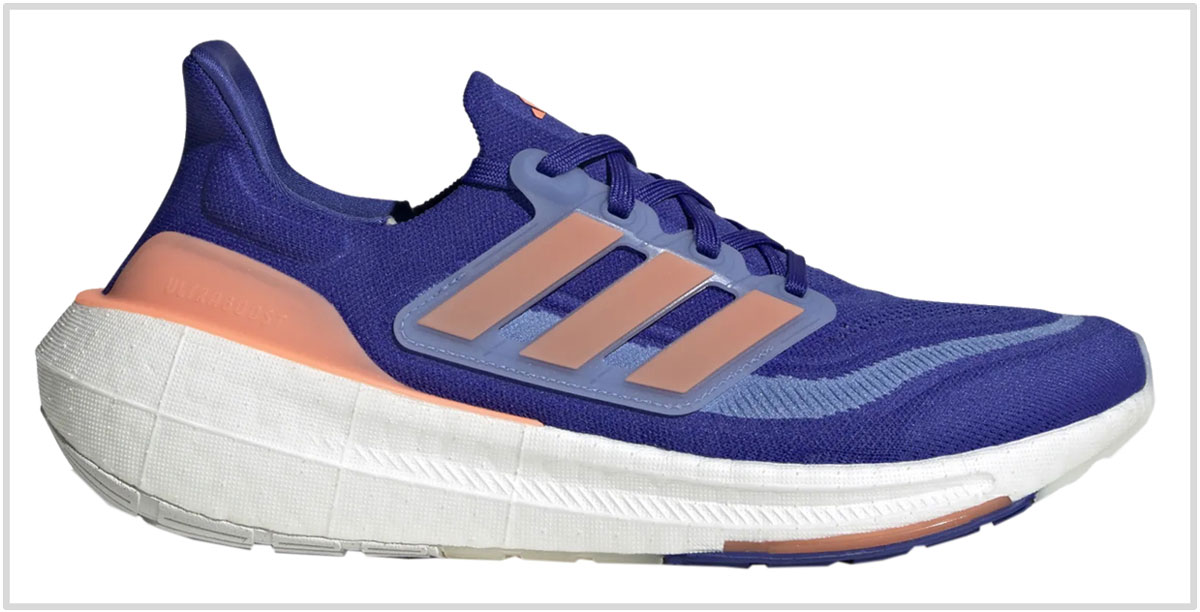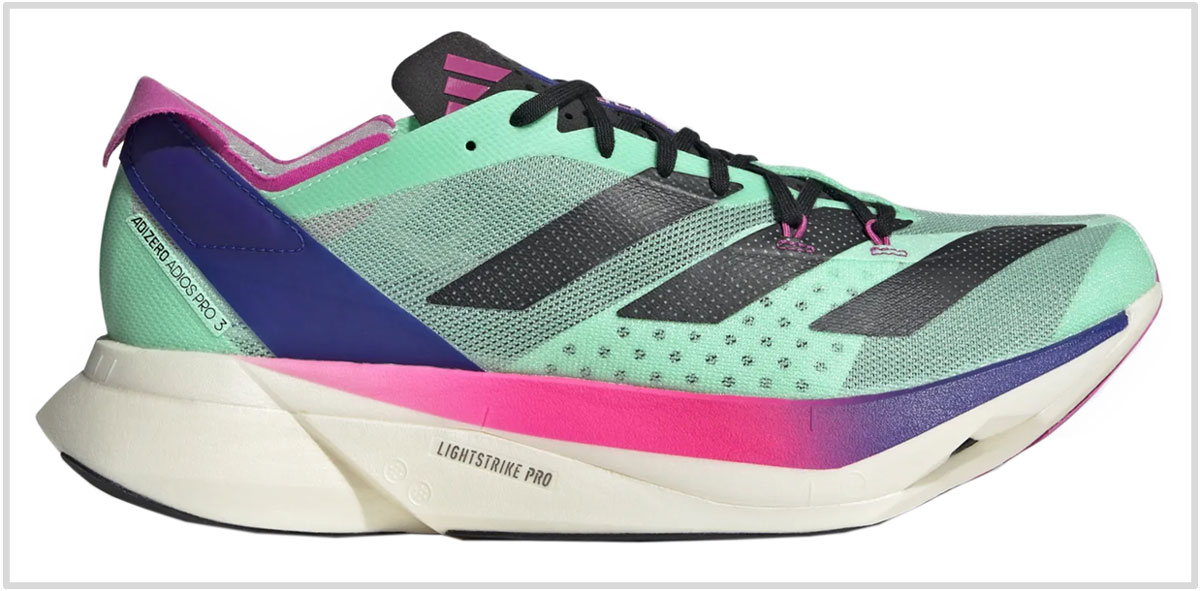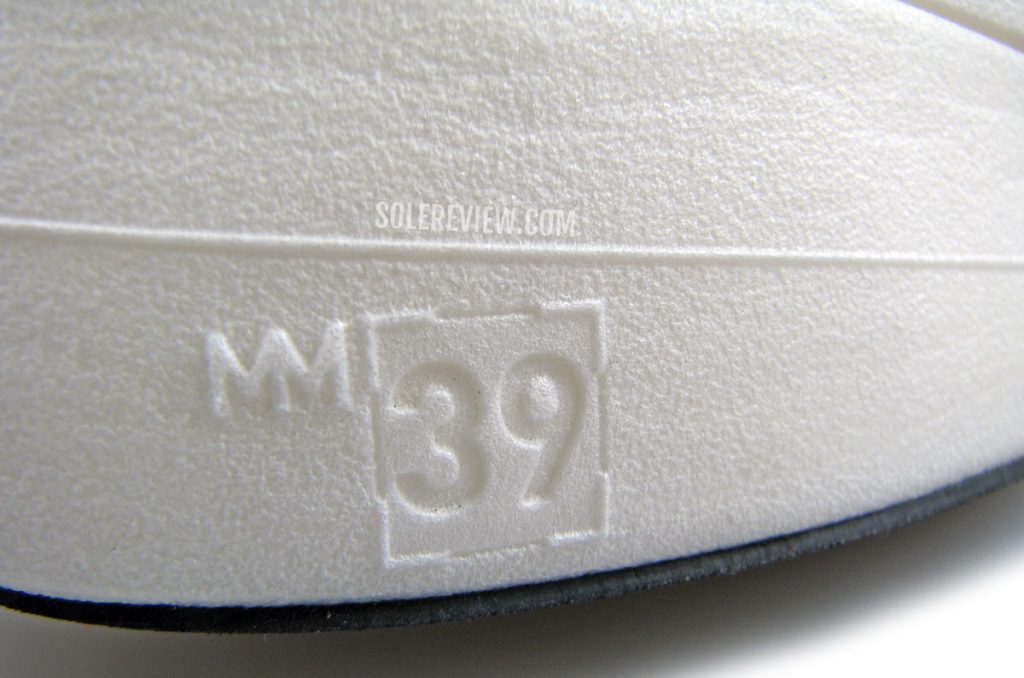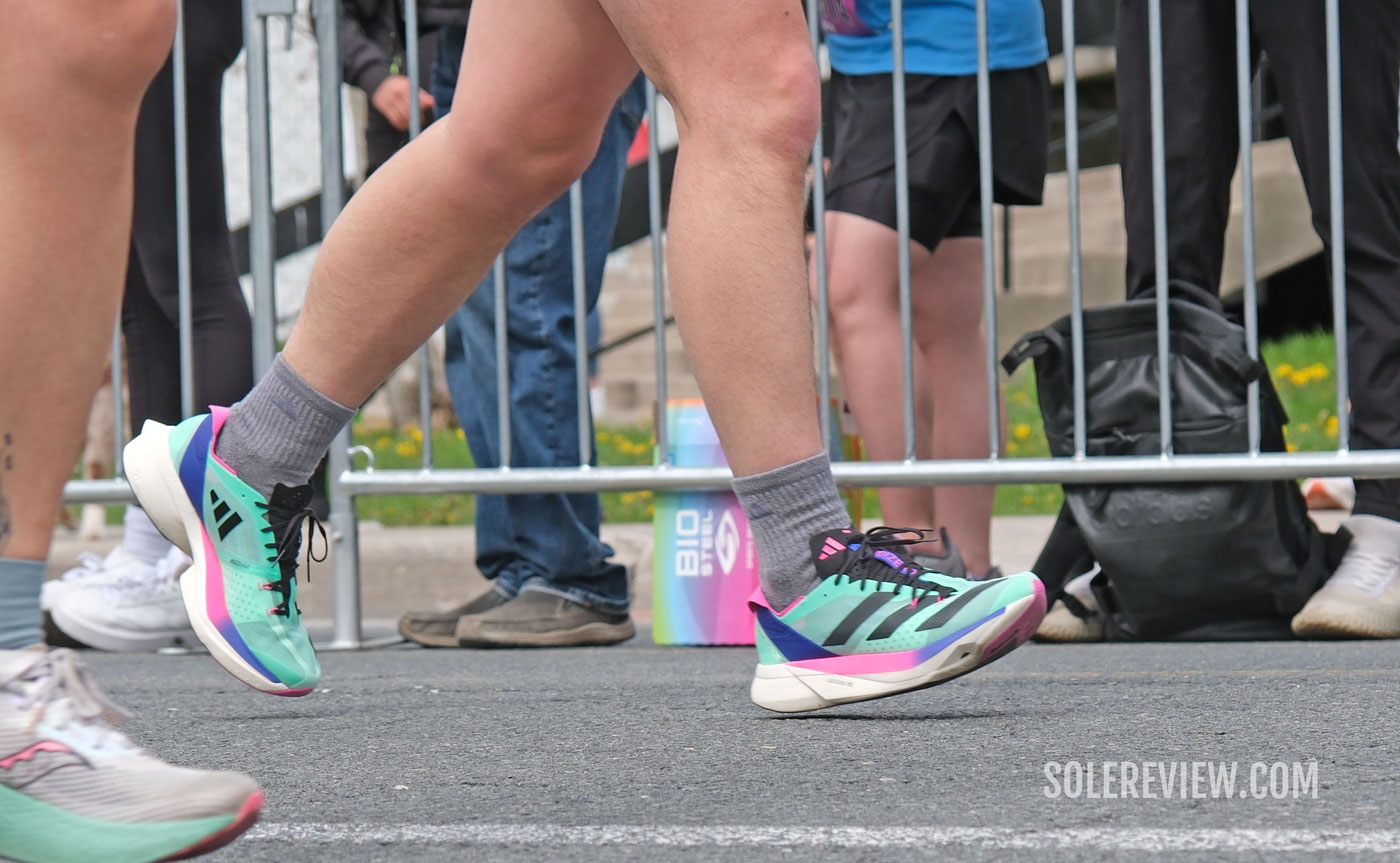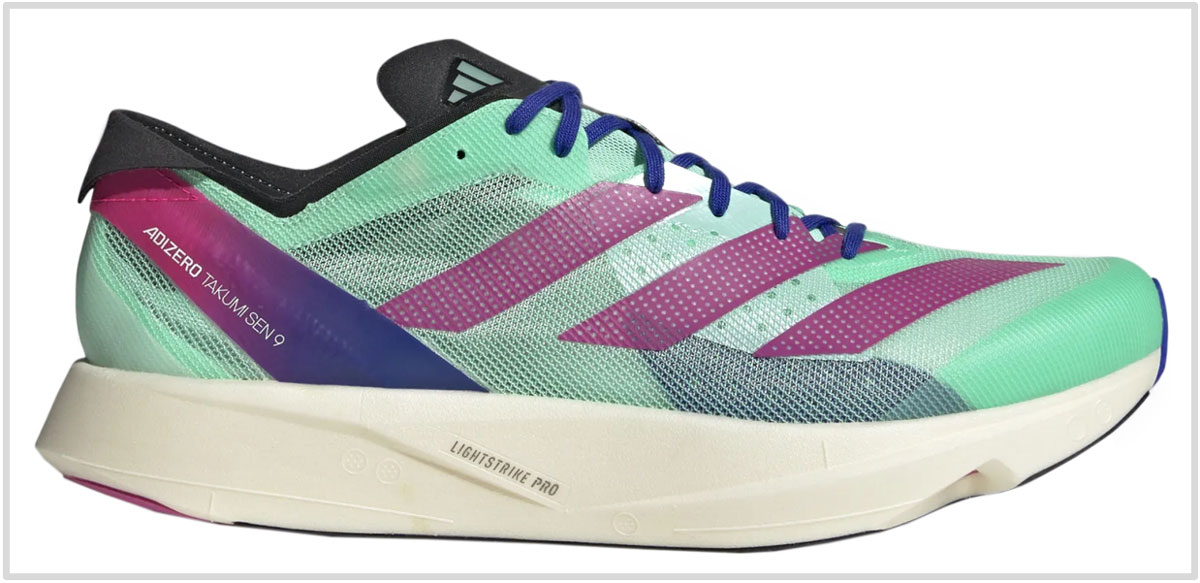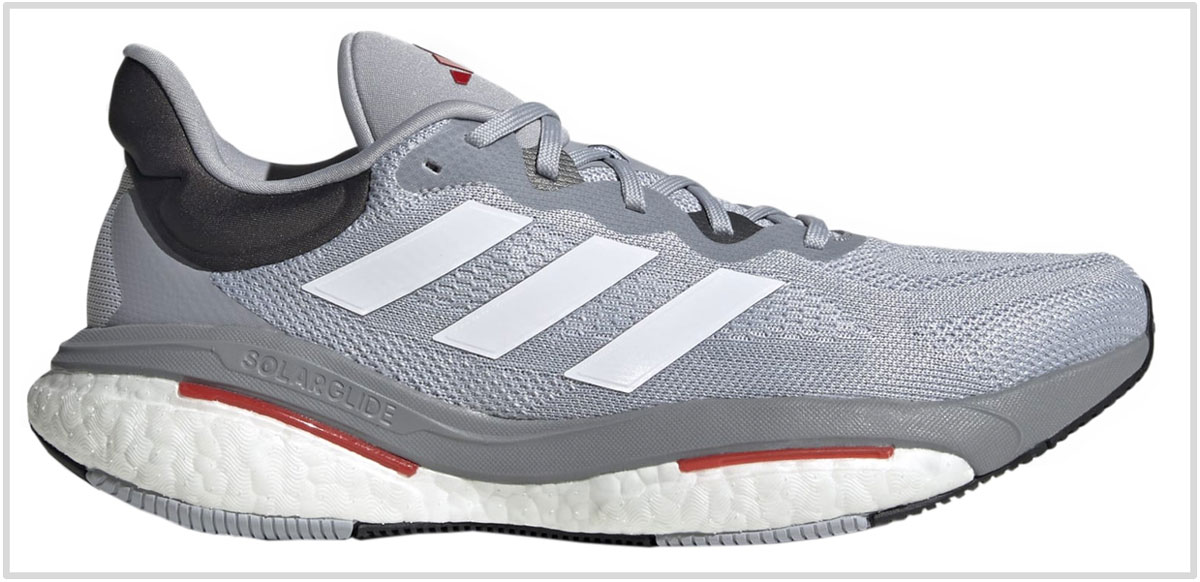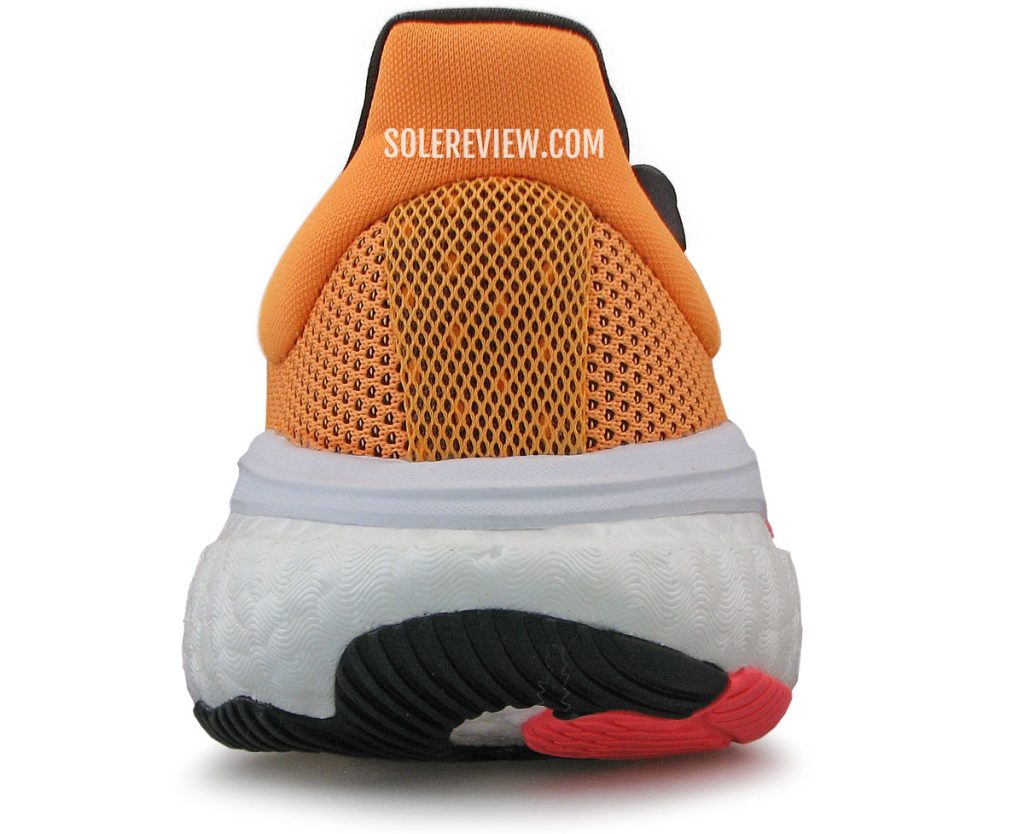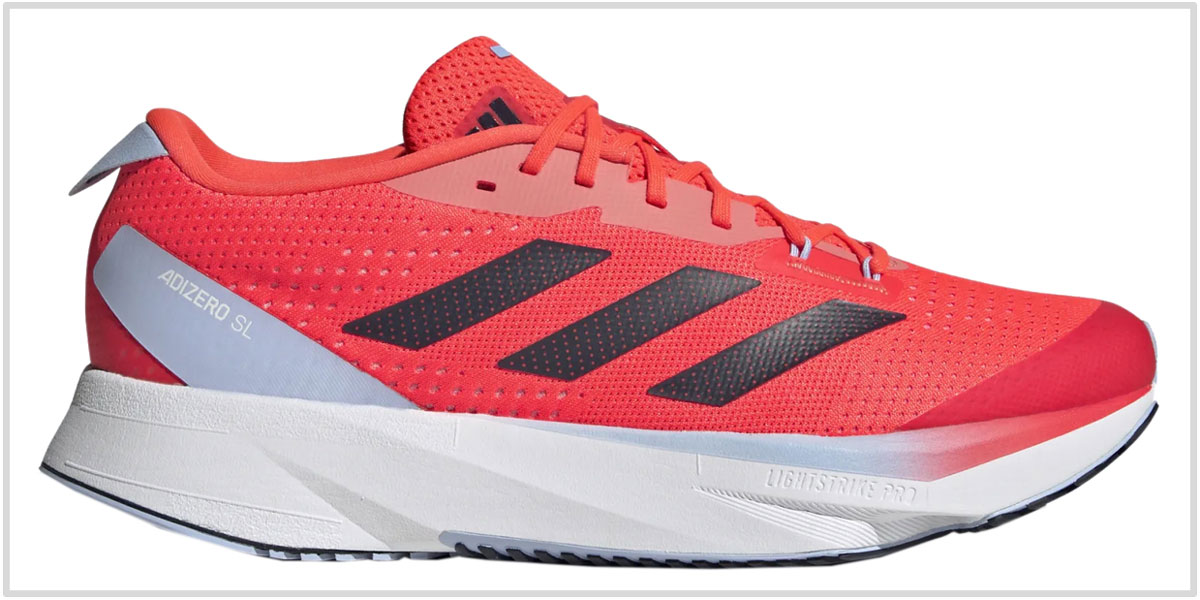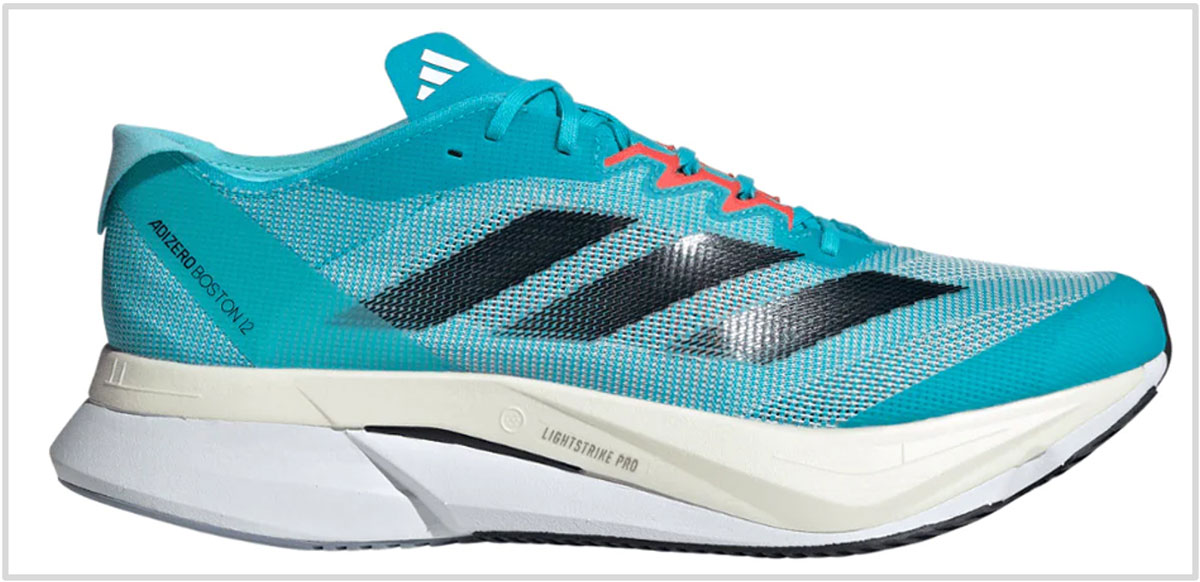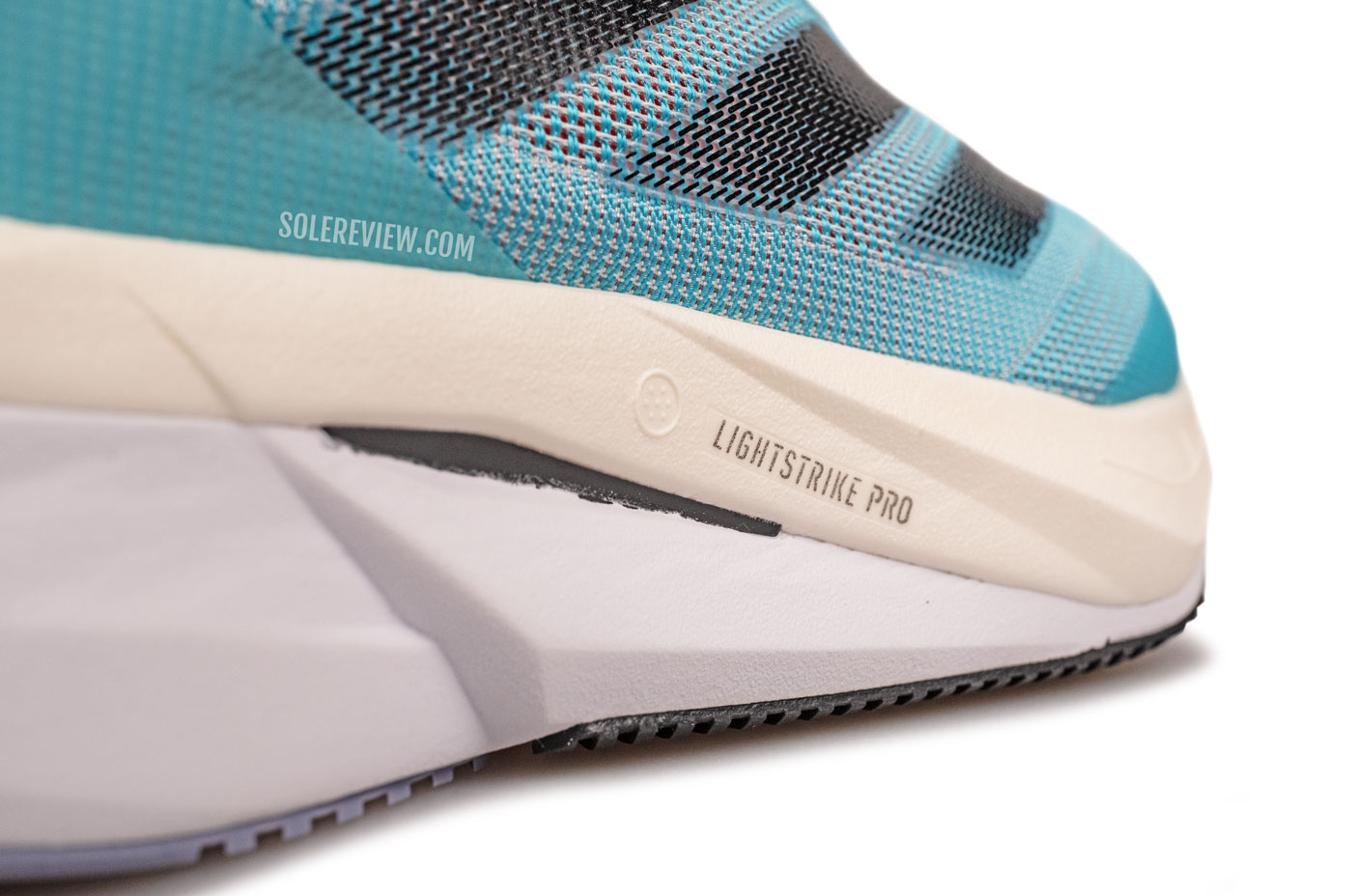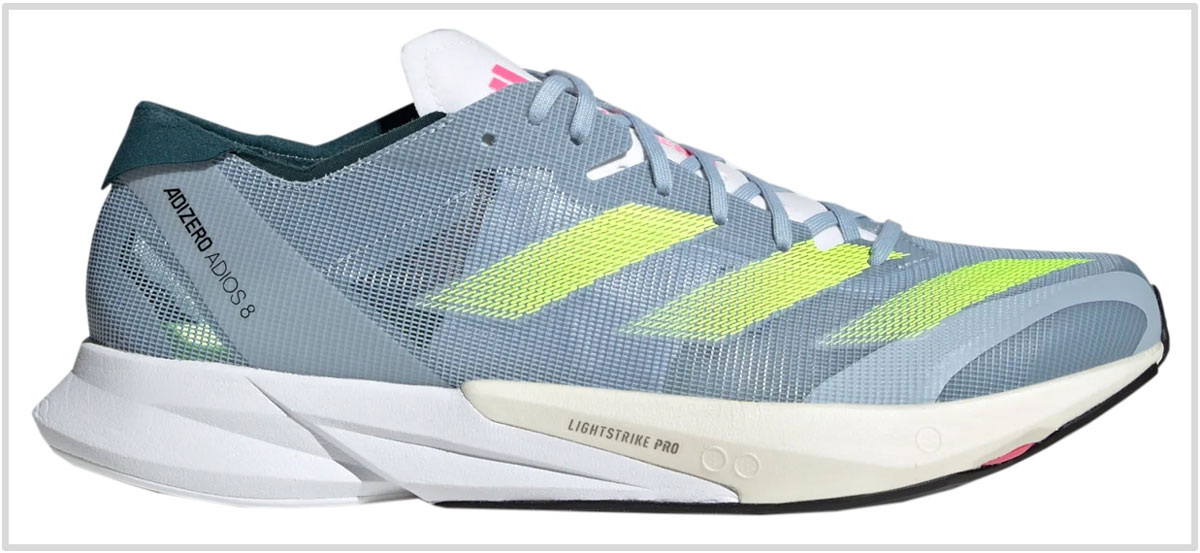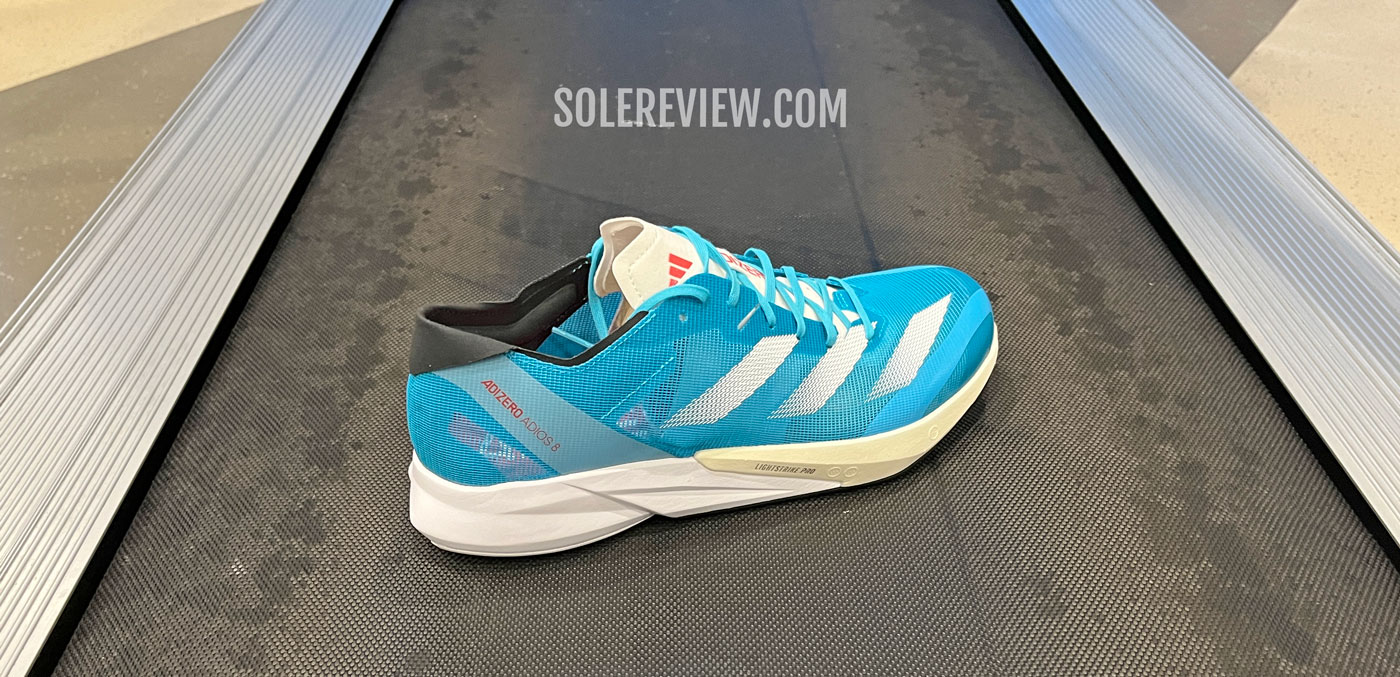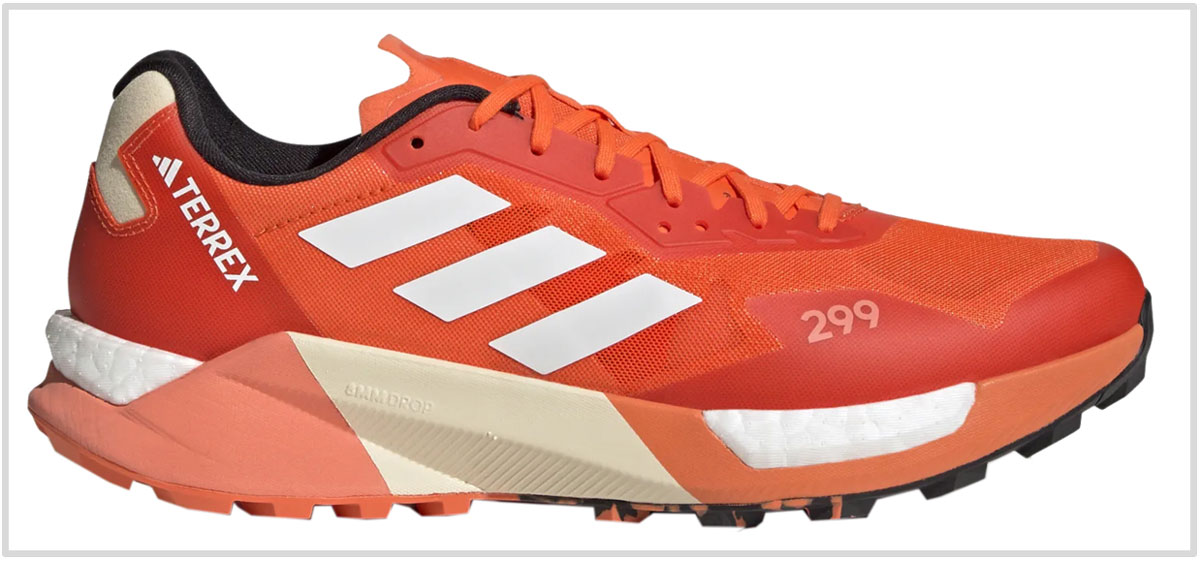This article has been updated with current models for December 2023. Most of the shoes on this guide have been replaced with their updated versions.
In this product guide:
- 1. Factors to consider
- 2. Most comfortable sneaker for easy runs: adidas Ultraboost Light
- 3. Most comfortable for marathons: adidas adios Pro 3
- 4. Most comfortable for half-marathons: adidas Takumi Sen 9
- 5. Most comfortable for heavy runners: adidas Solarglide 6
- 6. Most comfortable for tempo runs: adidas adizero SL
- 7. Most comfortable for speed training: adidas Boston 12
- 8. Most comfortable for short races: adidas adios 8
- 9. Most comfortable for trail running: adidas Terrex Agravic Ultra
adidas’s running shoe catalog has improved in the last few years, but it needs more work.
To their credit, they have a strong assortment of speed-training shoes and racers. The revamped versions of the adios, Boston, and Takumi-sen are fun to run in. And while the adios Pro 3 isn’t as exciting as the New Balance SC Elite V3 or Saucony Endorphin Pro, it does have a trick or two up its Lightstrike Pro midsole.
Speaking for the rest of adidas’s running shoe line-up, there’s a huge void of go-to products. There aren’t any credible neutral trainers or stability trainers. Where are the 3-stripe equivalents of the Brooks Ghost 15, Nike Pegasus 40, or Saucony Ride? The adidas Supernova Rise has just hit the market, but we’ll have to see how it measures against the competition.
For now, the entire running shoe assortment has been reduced to the adizero line-up. The Ultraboost Light exists, but it isn’t even a serious running shoe. It’s a casual sneaker disguised as a running shoe.
Flanking the Ultraboost Light are other variants like the Ultraboost 4.0 DNA, Ultraboost 5.0 DNA, and Ultraboost Web DNA. That is a problem that needs to be addressed.
If you want a comfortable long-distance cruiser, you are likely to try shoes like the Asics Nimbus 25, Brooks Glycerin, Saucony Triumph 21, and Nike Invincible 3 before considering the adidas Ultraboost.
Until recently, the Solarglide used to be a versatile everyday trainer that balanced cushioning comfort with supportive transitions.
But now, it’s a different shoe – the Solarglide 6’s improved stability comes at the cost of higher weight and low versatility. It’s almost as if the Solarglide 6 is a laced-up and clunkier version of the Ultraboost.
And sure, while the adizero assortment is excellent, none of the shoes are versatile enough to be everyday trainers. Okay, perhaps the new Boston 12 qualifies, but it still feels too ‘serious’ to be a do-it-all shoe. The adizero products are best used in rotation with other shoes, rather than standalone, do-everything trainers.
adidas does have a few redeeming qualities. The Lightstrike Pro foam is a competent cushioning platform, and so is the tried-and-tested Boost foam. The Energy Rods system also offers something that the others do not.
Except for the adizero SL with its forefoot-only Lightstrike Pro core, all the shoes on this guide feature the Boost or Lightstrike Pro foam. That makes sense, considering that these cushioning materials are the best that adidas has to offer.
The adidas Boost foam is a resilient and comfortable platform that’s based on expanded Polyurethane. While it’s not the lightest of all new-age foam, it’s extremely durable and weather-resistant.
For example, unlike ordinary EVA foam-based midsoles, Boost doesn’t stiffen in freezing temperatures. On this list, the Lightstrike Pro foam is used on the adios Pro 3, adios 8, Boston 12, and Takumi-Sen 9.
1) Most comfortable sneaker for easy runs: adidas UltraBoost Light
The original ‘Ultraboost’ was the first adidas running shoe with a 100% Boost midsole, and that doesn’t change for 2023-24. While the Ultraboost Light weighs less than the Ultraboost 22, it still has most of the features that have made this shoe a successful franchise.
Under the elastic upper is a full-length and high-volume Boost midsole with lots of ride comfort. This time, the midsole has better support due to the deeper and wider groove on the outsole.
This is a shoe with a 10 mm heel offset, so most of the Boost is stacked under the heel. The forefoot is relatively thin with a noticeably snappy feel – thanks to the extended plastic (LEP) shank that is longer than before.
Given its heft, the Ultraboost Light isn’t a serious running shoe (like the Boston 12), but rather a comfortable athleisure sneaker for casual use. This is also one of the most durable sneakers on the market – the Boost midsole and Continental rubber outsole will last for 500 miles, if not more.
The ultra-snug upper and shallow toe-box takes getting used to. At no point does the fit become uncomfortable, but then, the adidas Primeknit design has always been an acquired taste.
Also see: The adidas Pureboost 23.
2) Most comfortable for marathons: adidas adios Pro V3
While adidas sells other cushioned hyper-shoes like the Prime Strung X, the adios Pro 3 continues to be the cornerstone of its high-end racing shoe catalog.
Adidas differentiates the Adios Pro 3 by combining a cushioned ‘Lightstrike Pro’ foam core with a set of Carbon tubes that act as a transition device.
The adios Pro 3’s 39 mm heel stack and 31.5 mm forefoot thickness add a lot of ride comfort.
Though the adios Pro lacks the springy responsiveness of Carbon-plated shoes like the Saucony Endorphin Pro, the ‘Energy Rods’ infuse the comfortable midsole with an element of quickness.
The lightweight upper is surprisingly roomy for a racing shoe. The adios Pro 3 has an improved forefoot fit because of the internal ‘bands’ that the adios Pro V2 lacked.
adidas has updated the adios Pro 3 with a new upper and sole, but the ride quality is very similar to last year’s adios Pro V2.
3) Most comfortable for half-marathons: adidas Takumi Sen 9
The Takumi Sen 9 is very similar to the Takumi 8, which, by the way, was very different from the Takumi Sen 7.
Because if anybody remembers the Takumi Sen 7, it was nothing like the V8. Not even close. The Takumi Sen 7 was a racing flat with a harsh ride; the new Takumi Sen is a cushioned trainer with stack heights of 33 mm and 27 mm.
Despite the significant changes, the Takumi’s goals haven’t changed. This is a shoe that is best suited for runs between 5K and a half-marathon, except that it is more comfortable than it has ever been.
The Takumi Sen 9 is like a lighter, softer, and more responsive version of the adidas Boston 12. It’s also got a shorter heel drop of 6 mm. The unique Energy rods are spread out for a more efficient power transfer to the ground. The Continental rubber outsole covers the midsole in high-wear areas for grip.
It feels similar to the adios Pro 3, and that’s not surprising considering that both shoes use the Lightstrike Pro foam. The lightweight yet snug-fitting upper disappears over the foot during runs; the soft and breathable meshes help with interior comfort.
4) Most comfortable for heavy runners: adidas SolarGlide 6
Can the Solarglide 6 be considered a running shoe? Yes, and no. In our review of the previous model (the Solarglide 5), we explained why this unusually heavy trainer was anything but. The Solarglide 6 and 5 are based on an identical midsole platform, so both shoes are almost the same.
The Solarglide 6 weighs nearly 13 ounces, and the upper design is a work in progress. As a result, the Solarglide 6 lacks the versatility for different running speeds and use cases.
However, there’s no disputing the fact that the Solarglide offers a comfortable underfoot running experience. Generous amounts of the resilient Boost foam in the midsole create a cushioned foundation.
And unlike the Ultraboost with rearfoot-focused cushioning, the midsole has plenty of forefoot cushioning. Even though we had a dim view of the tongue design, the rest of the upper breathes well and has an accommodating fit.
The wing-like extensions of the internal shank make the Solarglide 6 exceptionally stable, even though the weight limits the shoe’s use to slow runs.
5) Most comfortable for tempo runs: adidas adizero SL
The adizero SL is a severely under-rated speed trainer. It’s comfortable, quick, and reasonably priced because it’s missing a few bells and whistles. But the lower spec level doesn’t get in the way of the shoe’s performance.
Unlike the Takumi Sen or Boston 12, the adizero SL only has Lightstrike Pro inside the forefoot. The rest of the midsole cushioning comes from an EVA blend foam that adidas calls Lightstrike.
The term ‘comfort’ should be viewed in the right context, so what makes a speed trainer ‘comfortable’ doesn’t necessarily apply to a neutral trainer like the Ultraboost.
In the adizero SL’s case, the Lightstrike midsole makes tempo runs less grueling. The dual-density foam stack creates a healthy separation between the foot and the ground, thus preventing the feet from getting beat down during sub-4:30 min/km (7 min/mile) runs. The softer Lightstrike Pro core under the forefoot is nice to have.
The lightweight racing upper keeps the interior ventilated and locks the foot down during speed runs and races. We also love that the adizero SL has a similar rib-like outsole that we loved on the Boston 11 and adios 7, even though the rubber isn’t Continental-branded.
Also see: Duramo Speed.
6) Most comfortable for tempo runs: adidas Boston 12
The adizero Boston isn’t what it used to be. The Boston 12 is considerably softer than the Boston 10 and 11; it’s almost as if the Boston 12 is a regular trainer now. We explain more in our detailed review, here.
Not only is the midsole significantly thicker than before, but the softer layer of Lightstrike Pro makes the midsole less punishing on the feet than some of the earlier (V11, V10) Boston versions.
It’s worth mentioning that the stack heights are only 4.5 mm lower than the Adios Pro 3 – and that makes the Boston 12 a very comfortable tempo trainer.
As a result, there’s ample cushioning under the foot for long runs like a half-marathon. Just like the adios Pro, the stiff Energy rods help make the transitions and turnovers quick. The Boston 12 is also durable and cushioned enough to be an everyday trainer, and a fast one at that.
7) Most comfortable for short races: adidas adios 8
As with most speed shoes in the adizero line-up, the adios 8 has gotten softer as well. The adios 8 also has the roomiest upper to date, so it’s not wrong to say that this is the most easygoing adizero adios ever. It’s still a competent speed shoe and racer, except that it’s aligned itself with current trends.
Even though the adios 8 excels at its role as a short-distance racer, the 27 mm tall rear and 19 mm thick forefoot ensure sufficient comfort during high-cadence runs. It’s like the new adios is the old adizero Boston. Read our detailed review of the adios 8 to find out more.
The upper keeps the insides comfortable through its lightweight and distraction-free design. The thin mesh shell has excellent ventilation, whereas the fused underlays secure the foot during speed runs.
The adios 8 swaps the rib-like outsole geometry of the adios 7 for a flatter design. Regardless, the Continental rubber outsole delivers reliable traction on the road.
7) Most comfortable for trail runs: adidas Terrex Agravic Ultra
When a running shoe’s name has the word ‘Ultra’ in it, you bet that the shoe is comfortable. The Terrex Agravic Ultra doesn’t disappoint.
A softer Boost foam core is wrapped by a firmer EVA foam casing, so there’s cushioning comfort and the stability that’s necessary for off-road running.
The firm 8 mm drop midsole works well for speed trail runs. The Continental rubber outsole has widely spaced lugs that grip well without clogging, while also acting as a protective barrier. Think of it as a rock shield of sorts.
The minimally constructed keeps the foot locked over the midsole in secure comfort. The toe-box and forefoot are reinforced with fused overlay; the 7-row lacing has optional eyelets in the midfoot for a custom level of fit. A padding-free tongue keeps the interiors distraction-free.
Do you own any of these shoes? Improve this review by sharing your insights – submit a review here.

